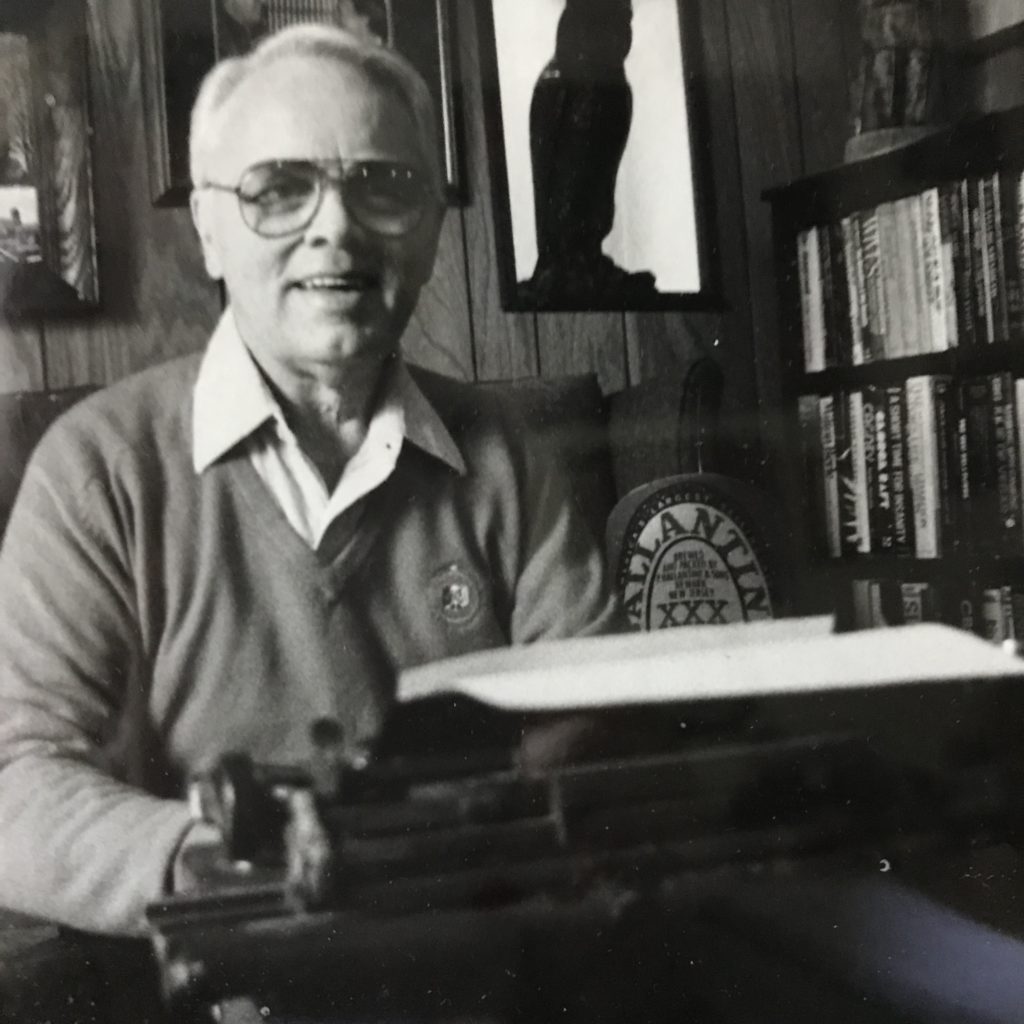
Ray Seery at work in Randolph, New Jersey
“I believe that one of the things the world needs now is a good laugh.”
Jokes were to our uncle what fireworks are to Fourth of July, a way to celebrate life and spread joy. Long-term Morris County residents may recognize the name Ray Seery, a Randolph resident and “gag writer” interviewed in the 1970’s and 1980’s in The Randolph Reporter and New Jersey Monthly. Highlights for him also included interviews with The Star-Ledger and Parade magazine.
His Newark childhood in the 1930’s was an overall happy one, though in any retelling by his nieces and nephew, it may have begun like a set up to one of the jokes he would later write: “Our mother had two brothers. One was Sonny Boy, as his father’s love shone upon him. The other was Ray. He became a comedian.”
Smart and attention-seeking, he was a classic class cut-up and made the rounds of most of the Newark public schools in the 1940’s. Having finally landed at Seton Hall Prep, his patient parents were called in one day to speak about the jokester. Told to wait outside the archbishop’s office with his partner-in-crime, Ray and his friend spotted the clergyman’s shiny Studebaker, parked in front of the school. This proved too tempting for the boys to resist, a big mistake on steep South Orange Avenue when they did not know how to work a clutch. They promptly crashed the car at the bottom of the street. Miraculously, it was still intact.
On another school-aged adventure in the days when Hollywood stars appeared on Newark stages, Ray, 13, waited outside his first stage door for Stan Laurel and Oliver Hardy who were performing in vaudeville, a family story he shared in an early interview with The Star-Ledger. He had opportunity to speak with the talented Mr. Laurel, who was kind and took the time to talk with Ray and encourage him with his interest in comedy. Stan Laurel corresponded personally with fans, and they wrote to each other until Mr. Laurel’s death in 1965.
Uncle Ray’s Navy hi-jinks were numerous, more material for the comedian-in-training and a story for another day, but it was in his return home to the US that he found direction for his talent – comedy. He funded initial work as a comedian with a day job as a bank teller. When he read in the papers that Bob Hope and Babe Ruth, two of his idols, would be playing golf at Forest Hill Field Club in Bloomfield, he could not resist a young man’s impulse to play hooky. Charming, Ray worked his way through the crowd, managed to meet both men and formed a lifelong professional connection with Mr. Hope. The next day, a front page photo of Bob Hope and Babe Ruth featured Uncle Ray behind the rope line. This delighted Ray, but not his boss, which led to Ray’s cabbie career in New York City, a great way for the young comedian to try his material out with test audiences on wheels.
For the ultimate appraisal of his material, Ray would take fares from Broadway, sometimes coming upon the stars themselves whether they were seeing other shows or appearing in them. Navigating the cab to the curb on a rainy night, before looking at his fare, Uncle Ray heard a man say, “The Waldorf Hotel.” Without turning around, avid movie fan Ray said, “Claude Rains.”
Pleased, Mr. Rains, the brilliant Warner Brothers character actor probably best known today for his role as French Captain Louis Renault in “Casablanca,” replied, “Thank you.”
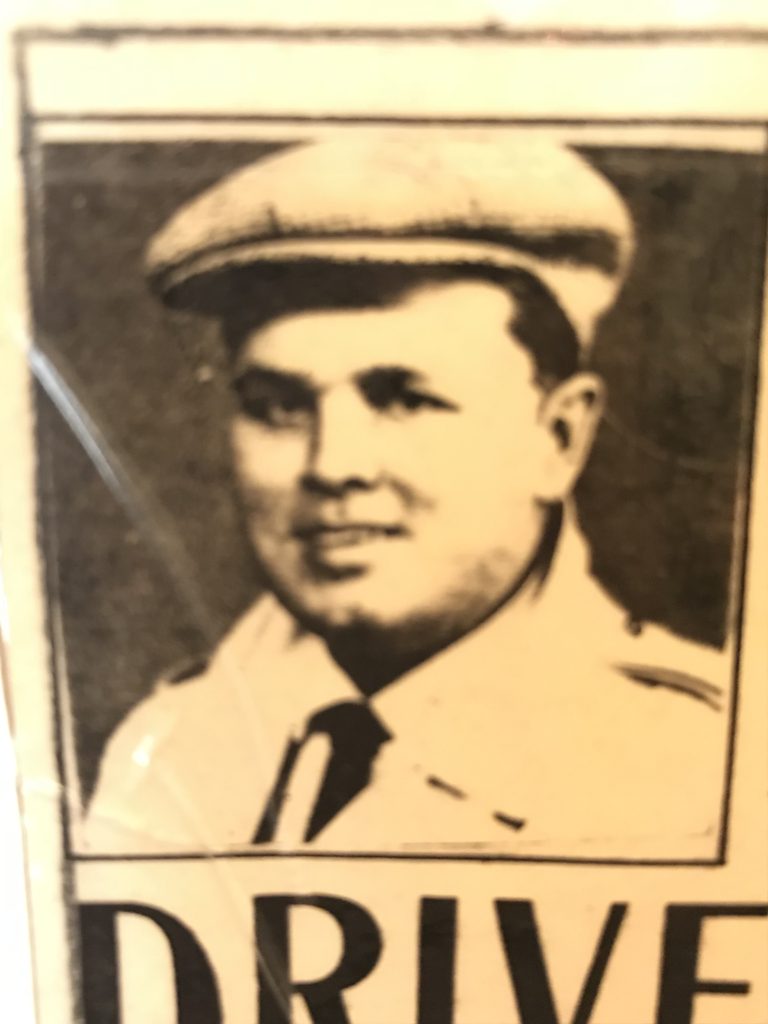
Young Raymond from his New York City taxi’s driver’s license
On forays when he ventured outside the cab and into the theater, Ray sought out his look-a-like, as Orson Welles was in his younger days, when he was on Broadway. The two hit it off creatively and maintained a lifelong friendship, exchanging ideas and jokes whenever they saw each other at events or corresponded. Regardless of how the press described the young genius, who married his first wife in New Jersey, Orson was always warm and gracious.
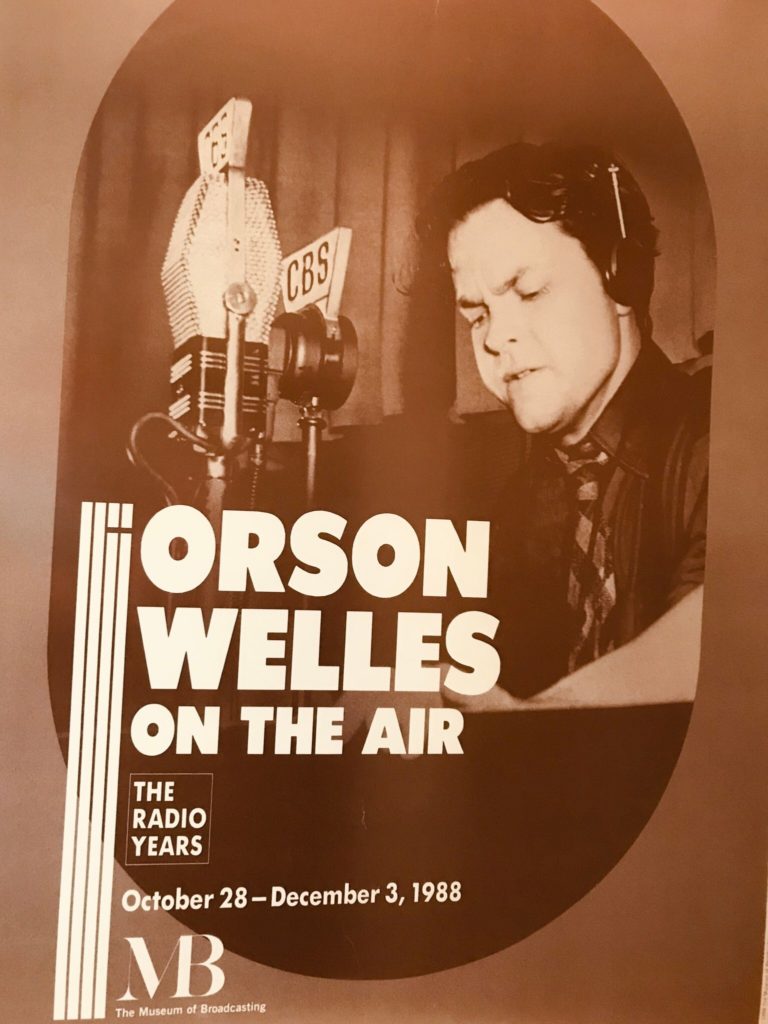
Orson Welles, just 23, Howard Koch, and John Houseman of the Mercury Theater created panic on October 30, 1938 when they broadcast a dramatization of H. G. Wells’ “The War of the Worlds” with a news-like format much like the 1937 Hindenburg real-life newscast asserting that a Martian invasion had begun in Grovers Mill, New Jersey about 30 miles from Lakehurst. (Sources: The Asbury Park Press, SmithsonianMagazine.com) Upon hearing that his in-laws were among those who had fled their homes, our grandfather quipped, “That’s what they get for not listening to Charlie McCarthy.”
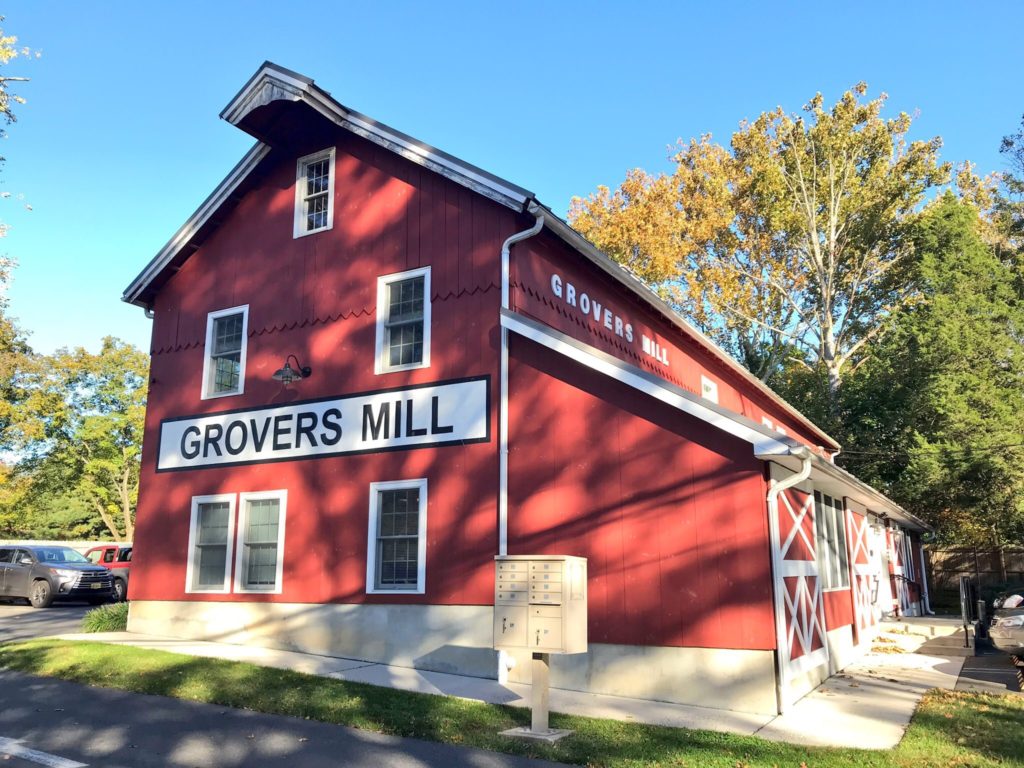
Serene Grovers Mill, now part of West Windsor
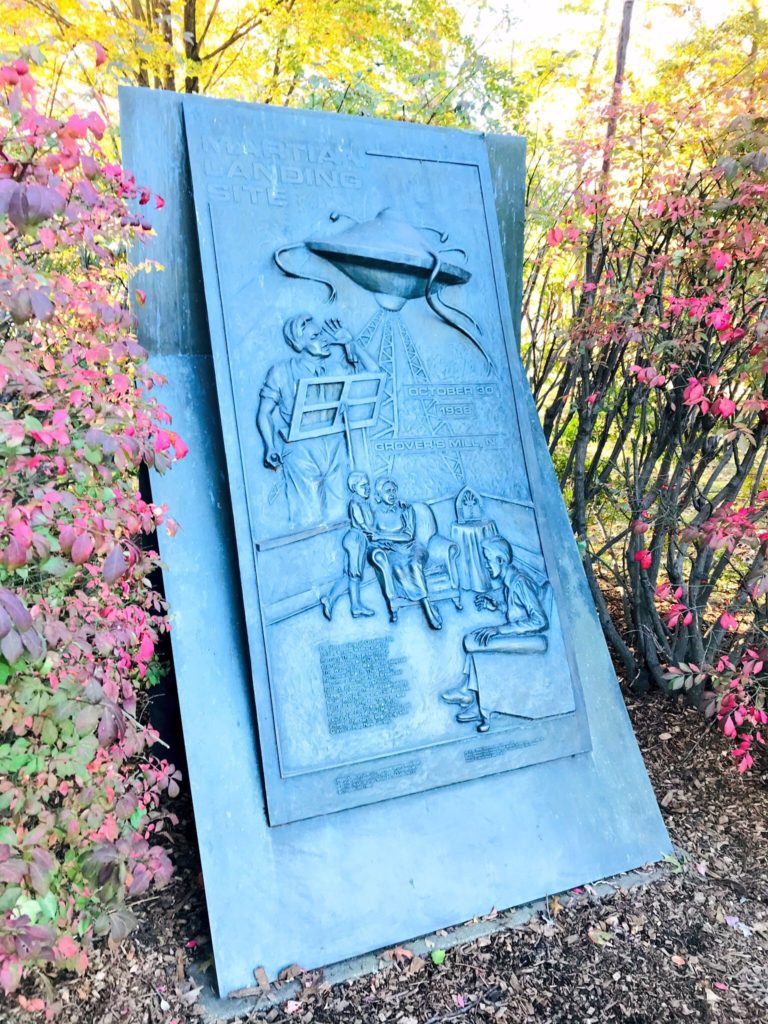
Monument for “War of the Worlds in Van Nest Park,” where historical markers, an Eagle Scout project, take visitors along a timeline of the broadcast. A nearby water tower was thought to be a Martian spaceship. Of an approximate 6 million listeners, it is estimated that in a jittery pre-WWII US, an estimated one million thought that there was an invasion.
As soon as he started working, Ray, the big brother, brought along his younger siblings to share his adventures from trips to Atlantic City’s Steel Pier to Coney Island to movie premieres. At a presidential debate shortly before the 1948 election, Uncle Ray brought our mother to snap photos while he greeted the candidates. As President Truman stepped off the elevator and our teen-aged mother tried to take a photo, Ray, a Democrat, called over, “Forget him, he’s going to lose!” The snaps of Governor Dewey were wonderful, though.
Comedy was difficult to break into, and kindhearted Ray soon saw that he was better suited to writing material than jousting with hecklers. Bob Hope bought some of his material, giving him his first paycheck as a comedy writer, which he had enlarged and framed. Once one comedian’s name was on the resume, doors opened with others: Phyllis Diller, Billy Rose, Rodney Dangerfield, and occasionally, people as varied as Daily News columnist Liz Smith and Bishop Fulton Sheen. For Bishop Sheen, Uncle Ray coined the phrase “Uncle Fultie” like “Uncle Miltie” for Milton Berle, both on television at the time, stories which he enjoyed sharing in interviews. Demand for jokes ran hot and cold, however, and aside from these noted professionals, paychecks from others sometimes got lost in the mail, so Ray was wise to have a full-time job.
Whenever Bob Hope came to the Garden State, Uncle Ray would meet him and have the backstage thrill of listening to the veteran comedian deliver his jokes to great laughter at places like the Garden State Arts Center. Even at White House events during two respectively different administrations, Ray and our aunt had the same pleasure. Committed to the USO and humanitarian causes, Bob Hope often hosted fundraising events in New Jersey and New York City. On one celebrated occasion, Uncle Ray and our mother met Grace Kelly. Princess Grace, who grew up in Philadelphia and spent summers in Ocean City, New Jersey, was as warm and beautiful in person as they had anticipated.
Steve Allen, comedian, author, musician, composer, and first host of “The Tonight Show,” encouraged Uncle Ray when he was starting out. Mr. Allen not only paid Uncle Ray for his material, but credited him publicly and treated him like a friend. Public taste in comedy changed over the years, but Steve Allen kept his material clever, clean, and not mean, which sounds like an Uncle Ray quip. This is one of the many reasons why they got along so well for decades. One of Uncle Ray’s favorite stories about Mr. Allen was how, after getting Mr. Allen to read his jokes by placing them under his car windshield, Ray enlisted the aid of a cousin to fly a banner over the Queen Elizabeth ocean liner on which Steve and his lovely wife Jayne Meadows, equally kind, were departing. Unbeknownst to Ray, Steve had wanted a low-key departure without press. The banner read: “Bon Voyage Steverino! Ray Seery”. The actual punchline was that Ray’s father (with the same name) and brother were fishing off Sandy Hook and, knowing Ray, nonchalantly took in the sight of the banner as Ray carried on a Jersey Shore summer tradition.
An all-round creative person, Uncle Ray was a talented cartoonist and artist. The Bob Hope, Dean Martin, Newark-born Jerry Lewis, Cary Grant, and Babe Ruth paintings throughout @kathleenhelen15 on Instagram are by him. He is the “uncle” of #uncleart, which when spoken, sounds much more aptly like, “Uncle Heart”.
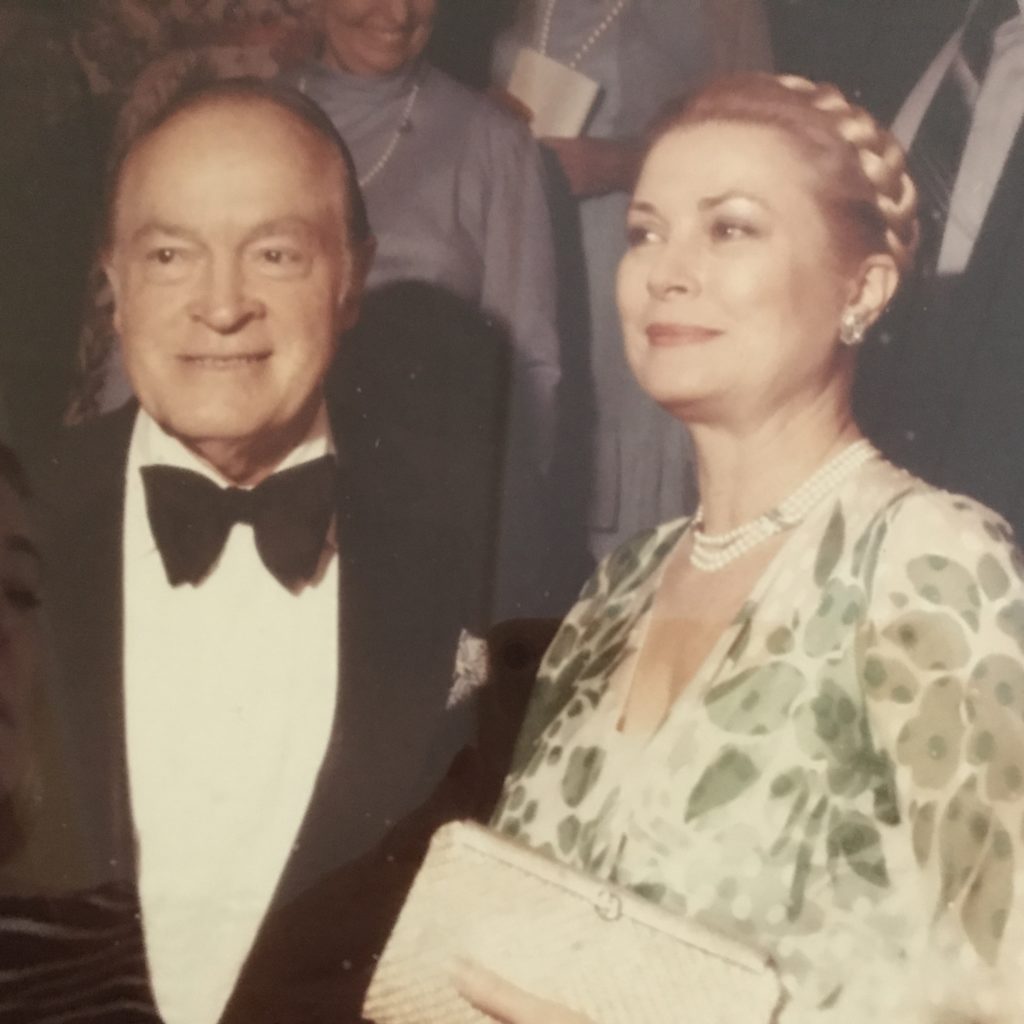
Bob Hope and Princess Grace of Monaco
“Ray Seery, Comedy Writer”: Adapted from “The Music Box” from Proverbs All Rights Reserved © 2013 Kathleen Helen Levey and Instagram @kathleenhelen15 Published June 26, 2017 “Writing New Jersey Life” All Rights Reserved © 2017

Comments are closed.